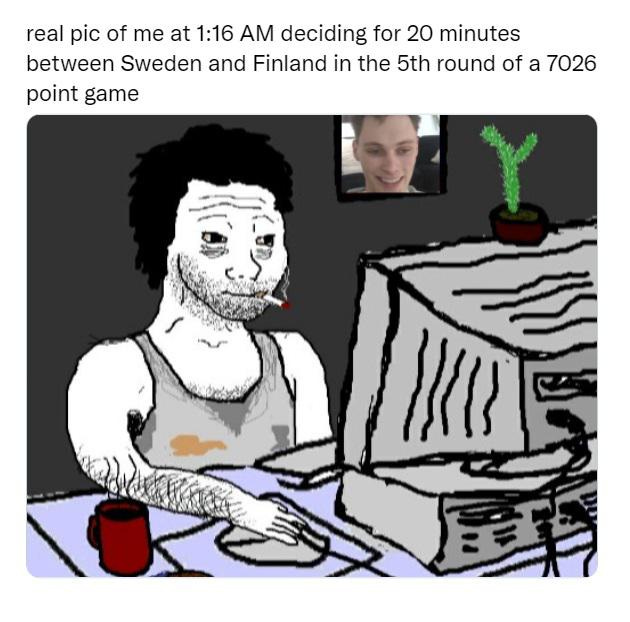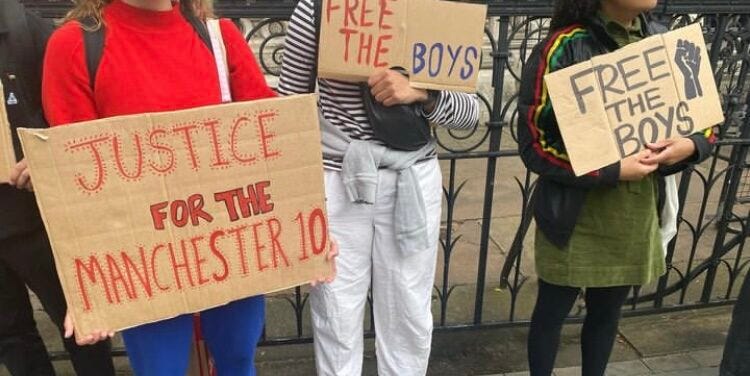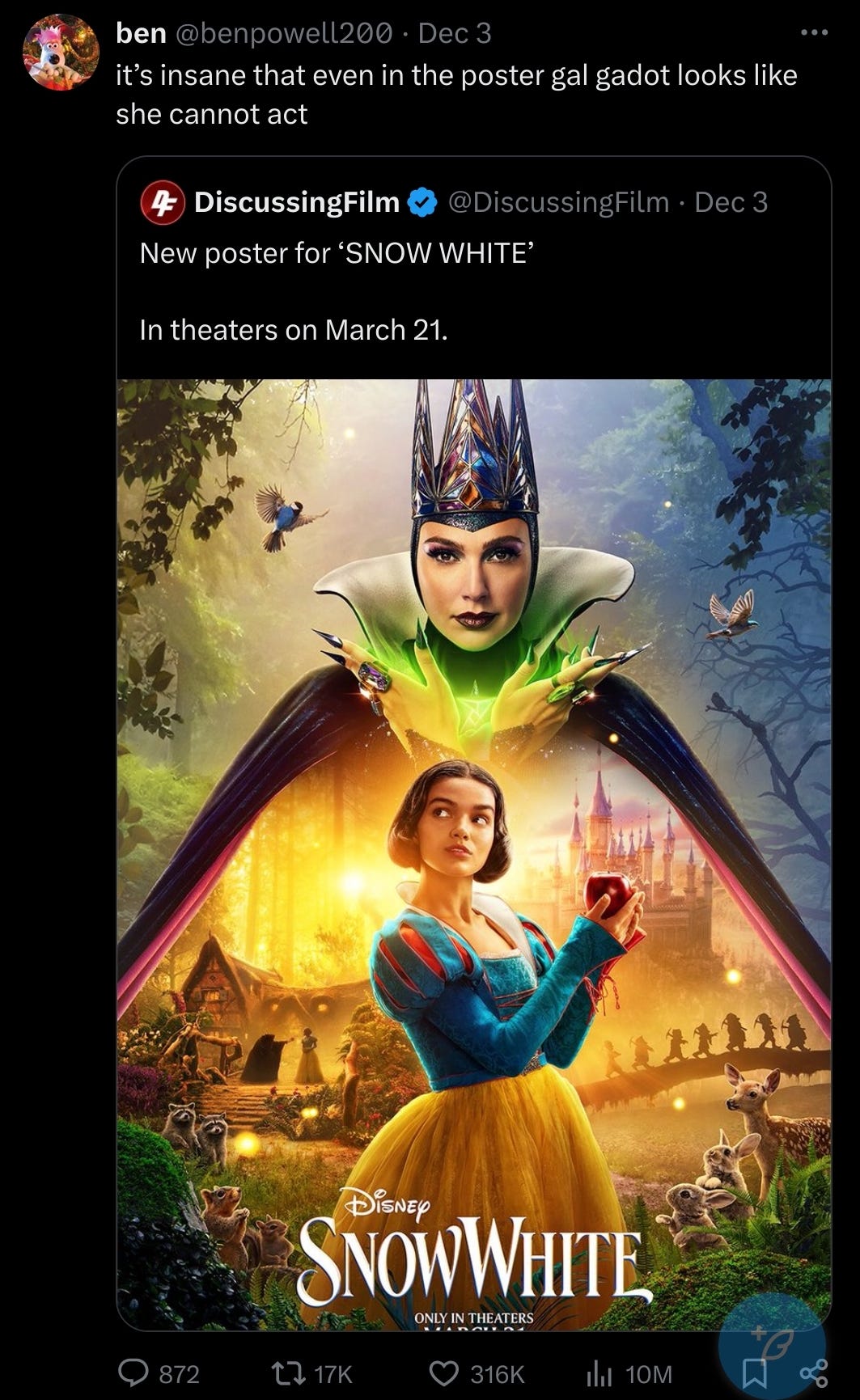lyrical crimes
on the demonisation of drill, and sneaky weasels

the shuffle is a bi-weekly write-up by me, Tommy H, a writer and editor at shado magazine.
I am particularly interested in how modern capitalism operates, resulting in the harmful politics and toxic culture we are all subjected to. Rather than being trapped in a doom loop, I am even more intrigued by the counterweight to this - liberation movements, frontline activism and grassroots journalism - which our magazine strives to platform.
This is a regular update where I choose a shado article to reflect on, giving my opinion on its analysis and the reason why it has gripped me. I might ‘shuffle’ the message, bring in my own experiences or raise further things to think about - hence the name!
I also like to think of it as a space to give some recommendations of what I’m listening to, watching, reading and thinking about, in the hope it may give someone even a crumb of comfort in these deadly serious times.
I hope you enjoy!
reflections 🪞
Damned by Drill: How British courts used music to convict 10 Black boys in Manchester
by Molly Lipson
The other day I read this eye-opening article by Molly Lipson, on the Manchester 10 case, where 10 young Black men were convicted, to varying degrees, of conspiracy to commit violence. This conviction happened in part due to participation in a shared Telegram group chat, which the prosecution said contributed to the notion they were in a gang together.
It is also of note that the rap and drill lyrics that some of the boys had on their phones or in handwritten notes was presented as proof of incitement to violence.
Suffice to say, it was a controversial ruling - with many questioning the reliance on circumstantial evidence, the creation of a ‘gang narrative’, and lack of direct links of the accused to actual violence. The whole affair seems to boil down to guilt by association and racialised charges against young Black men.
I confess to not knowing anything about this case before reading the article, only having vaguely heard of the Manchester 10 or ‘M10’. But the miscarriage of justice is quite clearly illuminated by Molly’s piece, pointing to a deeper societal rot when it comes to understanding and interacting with art and culture.
shoddy evidence
Song lyrics, especially hip-hop and rap, have been used as proof of wrongdoing in trials before. In fact, it’s more common than you might think.
I read about one case involving an aspiring rapper Vonte Skinner, who in 2008 was tried for attempted murder. During the trial, graphic rap lyrics that he had written down was used as a basis that he had “motive and intent” to commit violence. The words were read out in the courtroom as a form of indictment and Skinner ended up being convicted of attempted murder, sentenced to 30 years behind bars.
That was until 2012, when his conviction was overturned. It turns out the rap lyrics referenced in the original trial – which were not at all relevant to the crime that took place – shouldn’t have even been admitted as evidence. Who’d have thought??
This is not a unique phenomenon, just one I plucked at random by searching for times rap lyrics were used as ‘evidence’ in a trial. Seriously, you can take your pick of similar cases.
lyrics are not literal - underline it!
It’s a worrying trend that song lyrics are used as proof of intent or conspiracy to commit a crime. Music is entertainment, it is art – it is not reasonable to use lyrics as evidence. What happened to artistic license? Are lyrics meant to be 100% realistic statements of fact? I guess as far as the justice system is concerned, when it’s targeted at young Black men, anything goes.
It seems more reasonable to understand that songs, and artistic endeavours as a whole, are not literal representations of a person’s actions and behaviour. Sure they may contain parts of an artist’s opinion, but it’s a given that things are embellished. It’s creativity. This is especially true in rap.
As Molly articulates in her piece, drill lyrics read out sternly in a cold courtoom, devoid of context and a beat, are a different beast. It rips the soul out of the art and sterilises it. But worse, it criminalises the words, the feeling, the emotion behind those bars. In a sense, reading violent and uncomfortable lyrics out in a courtroom only serves to inflame the jury or prejudice the case instead of providing any direct verification of a crime.
This is a case study of how mere participation in Black culture is being weaponised and proscribed.
As Molly writes, “The M10 case is just one example of hundreds of similar instances of young Black boys being charged as gang members and Black culture being used at least in part as evidence of this.”
We can’t rely on the UK justice system, nor any other, to right this wrong - which they have reinforced and reproduced. Support networks and grassroots campaigns against injustice (such as Kids of Colour and Art Not Evidence) are our best defence against the attempts to illegalise culture and artistic expression.
For now, we wait for the appeal hearings in the M10 case on Thursday 19th and Friday 20th December with bated breath.
~ Tommy
smirk of the week 😏
honourable mention:
shado in focus
My choice for an episode of shado in focus to listen to is Stammering in the intersections by Ella Sinclair, which focuses on the specific experiences of women of colour who stammer. An interesting look into a hidden inequality – stammering – and how this can intersect with others parts of your identity, bringing these challenges to the forefront. Listen to it on your next train ride!
offbeat optics
Apparently weasels like to stash things? A suspected foot-fetish shoe thief at a kindergarten in Fukuoka, Japan turned out, thankfully, to just be a local weasel (uplifting). It was caught in the act in this video, committing its 15th (!) act of sole snatching. Watch it for a little pick-me-up.
“It’s great it turned out not to be a human being,” Deputy Police Chief Hiroaki Inada told the Associated Press. Many such cases.
Bonus related Otter mishap: https://x.com/SmalltimeJones/status/1866149955859009632
one thing to watch:
Second Thought - Why is Elon Musk Like That? (YouTube, ~20 mins, sorry about the horrific screen grab)
This is a great deep-dive into everyone’s least favourite tech feudalist Elon Musk, from great video essay BreadTube channel Second Thought. It delves into why Musk’s endorsement of Trump, and associated other actions of questionable morality, did not come out of a vaccuum.
Without giving the video away too much, it’s basically Ronald Reagan’s fault, as well as the hippies of the 1960s who eventually became the techno-libertarians of the modern era - those who believe technology can liberate us from government tyranny (but only if they hold all the power instead).
I found it a useful reminder that talk of ‘liberation’ without discussing politics or capitalism is redundant at best, and highly damaging at worst.
one thing to groove to:
Moses Yoofee Trio - GREEN LIGHT (feat. ENNY)
This soulful collab between jazzy ensemble Moses Yoofee Trio and South-East London rapper ENNY is a smooth ride. You may know ENNY from the remix of Peng Black Girls, the COLORS show live version with Jorja Smith has a staggering 30 million views (also highly recommend)!
ENNY is a top-tier lyricist, who flows so well over this rhythmic instrumental in a tight 3-minute jam. Check it out!
one thing to listen to:
Elia Ayoub (fellow shado editor) - Forever is Over: On the Fall of Bashar Al-Assad. A timely and thoughtful reflection on the end of Assad’s Syria. Open it in the Substack app to listen to it being read out!
one thing to read:
The manifesto of Luigi Mangione, the suspect in the killing of the UnitedHealthcare CEO Brian Thompson. Presented without comment.
bonus read: Why I Published the Shooter Manifesto by journalist Ken Klippenstein.
one thing to do:
Play Geoguessr - that’s right, it’s the global location guessing game - made infamous by social media personalities like Rainbolt who make it look easy.
Ok I’m a huge geography nerd but honestly, give this game a try. Here’s how it works: you are given a random Google Streetview to observe and look around, with just two minutes to place a pin on a map to guess as to where you think it is. There are three games of this a day, and I’m obsessed.

Without shame, I find it interesting to understand landscapes a bit more and get a feel for what different parts of our planet look like. Does it feel rural Latin American or coastal African? The suburbs of Eastern Europe, or a busy corner in South Asia? Why?
Look for language clues in things like road signs, shop names and adverts. The weather, the architechture, the cars - they all gives hints as to where. Even if you find it super difficult at first, you’ll soon get the hang of it and be geoguessin’ all day (no they haven’t paid me to endorse their game, I’m just addicted 😬).
any thoughts?
Do you love / hate / have strong feelings on any of the above? Or have a different recommendation you’d like to share? Leave a comment below - most original or interesting comment will feature in the next newsletter 💅




Thanks Tommy, this was really interesting :) I like the format you have of mixing heavyweight conversational topics in with musical nourishment and more light-hearted content. I wasn’t aware that grime/ drill/ rap lyrics are used as court evidence and am quite dismayed by this. I don’t know much about this music genre but as far as I am aware, from my friend who is a social worker, this genre of music serves as a positive and creative focus for many young males growing up in deprived socioeconomic environments - a pathway leading away from violence and exploitation, rather than towards it. Art is so often a space in which trauma is explored/ expressed and creatives process emotional challenges, distressing life events or toxic cultural influences. When we imagine the scenario of - let’s say - a wealthy, white visual artist painting a picture with violence in it, it seems laughable that this would ever be submitted as courtroom evidence, highlighting the racism and classism entrenched within this practice.
hey Jess! thanks so much for reading, and for your very insightful comment. Great point about such music being a creative outlet rather than a channel for violence, and yes the double standards are quite clear if you imagine someone using a violent painting as evidence in a courtroom, which seems absurd as it should be.
It's a worrying trend - part of a larger culture of clamping down on freedom of expression. I hope we can do more to resist this!